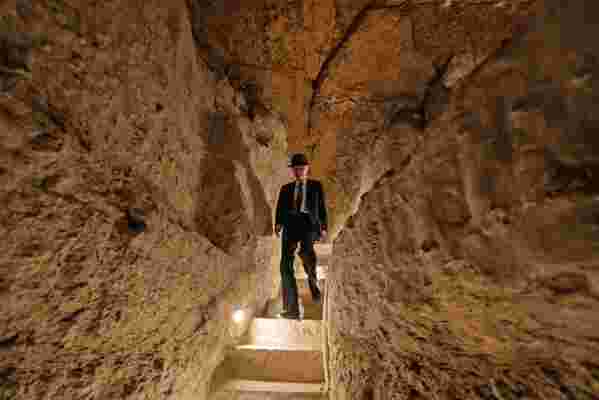With a few notable exceptions , the last few days and weeks have brought plenty of news of closings and postponements. Thankfully, these uncertain times haven’t stopped the completion of an ambitious Egyptian restoration project 14 years in the making. Earlier this month the Pyramid of Djoser, the first stone pyramid erected in Egypt, reopened to the public after a careful, challenging $6.6 million renovation process. A UNESCO World Heritage Site located 20 miles south of Cairo, the 197-foot-tall structure that serves as the burial place of its namesake pharaoh represented a revolutionary advance in Egyptian architecture when it was designed by Imhotep (an Egyptian chancellor to the pharaoh Djoser) in the 27th century B.C.
Despite standing for millennia, the structure’s ornate but hollow interior, which features a burial chamber and more than three miles of walkable paths, threatened the overall structural integrity. The situation was severely exacerbated by a 5.8 magnitude earthquake that rocked Cairo in 1992. A 2003 study of the pyramid confirmed that its structural integrity was in doubt, inspiring the restoration project’s eventual kickoff in 2006. From there, work proceeded in fits and starts, thanks in no small part to Egypt’s 2011 revolution and the years of political change that followed.
Restoring the Pyramid of Djoser’s structural integrity was a two-part process. First, structural engineer Peter James placed a series of airbags (which were originally designed for shock absorption during bomb diffusion, according to Business Insider ) throughout weakened areas of the hollowed interior. Furthermore, a series of steel rods were fitted through the pyramid’s terrace steps to help preserve its shape. Taken together, these reinforcements allowed the team to safely work on the ceilings and interior passageways. In addition to shoring up its overall integrity, an enhanced lighting system and more accessible entryway for those with disabilities make the pyramid more welcoming to visitors.

A tourists walks inside the newly renovated Pyramid of Djoser.
The reopening of the structure to visitors on March 5 represented the culmination of a significant effort meant to further bolster Egypt’s $12.6 billion tourism industry, the country’s third-largest revenue source.
“The reopening of such an old pyramid will not only brighten the outlook of Egypt’s tourism industry, as many tourists would be interested in visiting the monument,” Mostafa Waziri, Egypt’s secretary-general of the Supreme Council of Antiquities told Middle Eastern news outlet Al-Monitor . “It also sends a positive message about Egypt’s commitment to preserving and restoring its ancient monuments and sites.”
The ultimate resource for design industry professionals, brought to you by the editors of Architectural Digest

Obviously, the timing itself is rather unfortunate for reasons that have little to do with Egypt whatsoever. The Al-Monitor noted a lack of tourists at the site earlier this week, likely in response to travel restrictions and general concern over the coronavirus pandemic. There’s no word on whether the site is officially closed, but the suspension of all flights into and out of Egyptian airports effectively renders it closed to the outside world for the time being.
